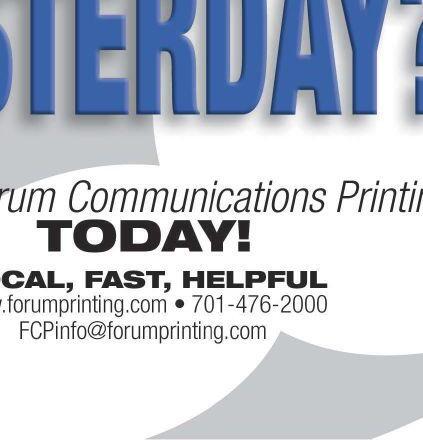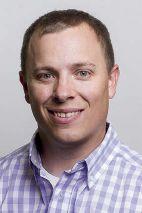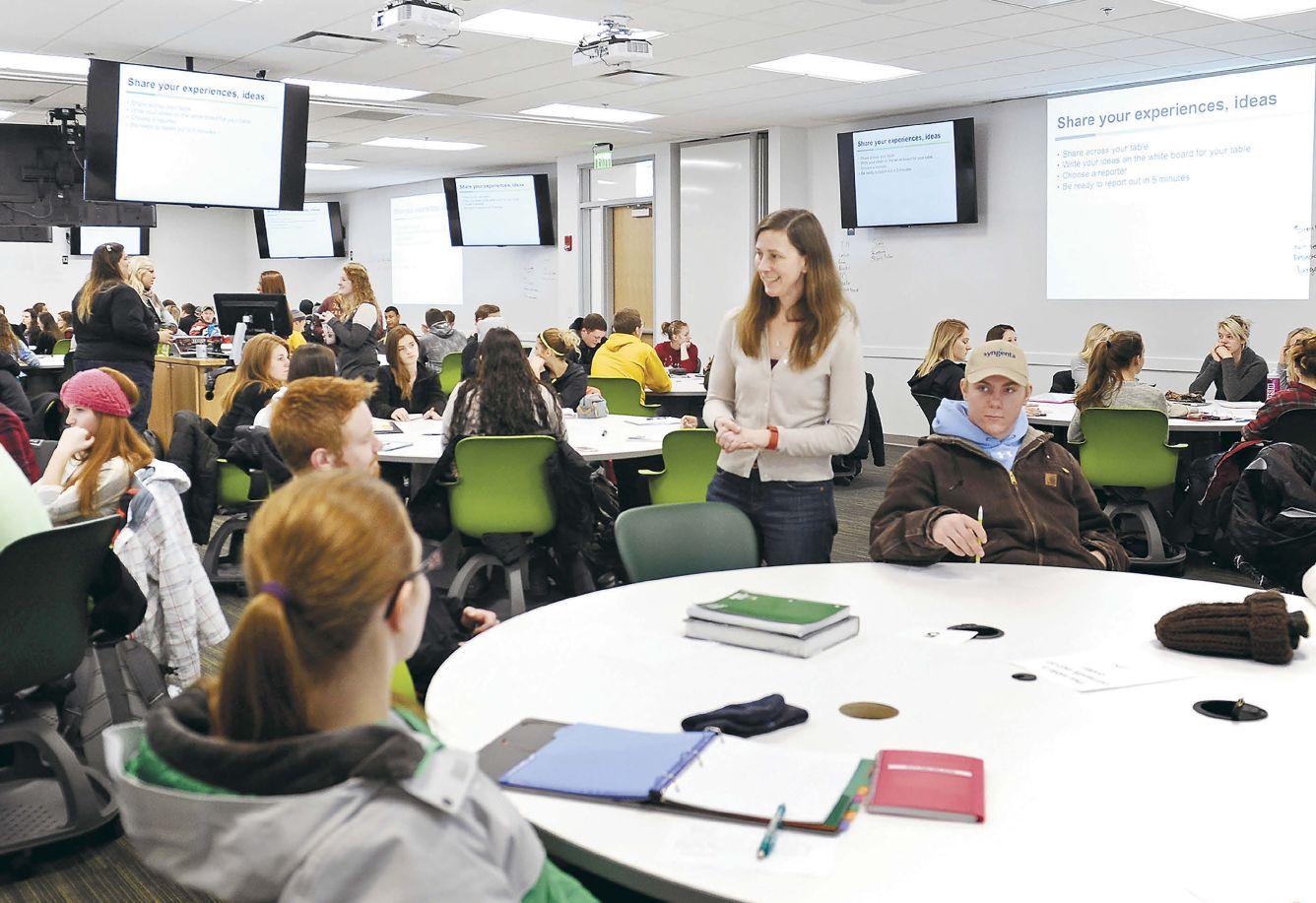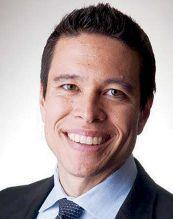RENAISSANCE ZONE

FARGO-MOORHEAD
CIVIC LEADERS REFLECT ON THE METRO AREA’S SUCCESS




PREMIER BUSINESS MAGAZINE OF THE NORTHERN PLAINS | JANUARY 2019
PAGE 14
TIM MAHONEY
MAYOR OF FARGO














WHO WILL MAKE THE LIST IN 2019? Prairie Business Magazine is accepting nominations for our annual Top 25 Women in Business. We’re seeking those women who are making big moves and leading the way in their careers and communities. If you know a great candidate for this coveted list, go to prairiebusinessmagazine.com and click on the Top 25 Women in Business logo to submit a nomination. Nominations accepted through January 13, 2019. 001812509r1 4 TWITTER.COM/PRAIRIEBIZ FACEBOOK.COM/PRAIRIEBUSINESS PRAIRIEBUSINESSMAGAZINE.COM



Business Whether you’re expanding your business, or financing a new piece of equipment, Gate City Bank provides better banking through customized solutions, a variety of products and a business banking team that keeps your bottom line top-of-mind. Made Stop by a Gate City Bank location, call us at 701-293-2400 or 800-423-3344, or visit gatecity.bank for more information. Banking Better Business Checking | Business Lending | Cash Management Member FDIC 36 Locations in North Dakota and west central Minnesota






FOR EVERY BRIGHT IDEA.
FOR EVERY BRIGHT IDEA.
Providing the highest quality of building design and coordination for every student with a curious mind.
Providing the highest quality of building design and coordination for every student with a curious mind.

MECHANICAL ENGINEERING | ELECTRICAL ENGINEERING | CIVIL ENGINEERING
MECHANICAL ENGINEERING | ELECTRICAL ENGINEERING | CIVIL ENGINEERING
Fargo, Minneapolis, Duluth Bismarck, Grand Forks, Alexandria
Fargo, Minneapolis, Duluth Bismarck, Grand Forks, Alexandria
Learn more at obernel.com
Learn more at obernel.com
21 HIGHER EDUCATION
NOT YOUR PARENTS’ UNIVERSITY USING ‘COLLABORATIVE LEARNING’ AND OTHER APPROACHES, COLLEGE CLASSROOMS AROUND THE REGION ARE BEING TRANSFORMED




24 LAW 27 ENERGY ON THE COVER: RENAISSANCE ZONE
THE LAW AND AI LOCAL LAWYERS ASK, ‘WHO’S RESPONSIBLE FOR DECISIONS WHEN THERE’S NO HUMAN IN THE LOOP?




ETHANOL POWERS UP BAKKEN OIL ISN’T THE ONLY ENERGY SOURCE THAT HAS RAMPED UP IN RECENT YEARS.
ETHANOL HAS, TOO
8 JANUARY 2019 VOL 20 ISSUE 1 FEATURES DEPARTMENTS 10 EDITOR’S NOTE BY TOM
12 TECHNOLOGY EVERYTHING YOU WANTED TO KNOW ABOUT BLOCKCHAIN, BUT WERE TOO CONFUSED TO ASK BY VINOD LALL PRAIRIE BUSINESS ROUNDTABLE 14 FARGO RISING IN A MEETING WITH PRAIRIE BUSINESS, FARGO LEADERS ANALYZED THEIR HOMETOWN’S REMARKABLE GROWTH 33 CONSTRUCTION CORNER THE BIGGEST CONSTRUCTION PROJECT IN SIOUX FALLS’ HISTORY IS BUILDING THE CAMPUS OF AVERA ON LOUISE 36 INSIGHTS & INTUITION 38 BY THE NUMBERS 30 Prairie people TWITTER.COM/PRAIRIEBIZ FACEBOOK.COM/PRAIRIEBUSINESS PRAIRIEBUSINESSMAGAZINE.COM prairie people VISIT WWW.PRAIRIEBUSINESSMAGAZINE.COM TO SEE THESE AND OTHER NEW HIRES, PROMOTIONS AND AWARD WINNERS IN THE REGION. TERI LINGEN JENNIFER HENRY HAS BEEN HIRED BY DAKOTA BUSINESS LENDING AS A CREDIT AND COMPLIANCE SPECIALIST. LINGEN EARNED A DEGREE AT NORTH DAKOTA STATE UNIVERSITY AND HAS WORKED WITH AG RETAIL FINANCING IN THE LOAN/LEASE DOCUMENT PROCESSING AND CLOSING INDUSTRY FOR EIGHT YEARS. HAS BEEN HIRED BY ESSENTIA HEALTH AS A NURSE PRACTITIONER IN FARGO. HENRY EARNED A MASTER’S DEGREE IN NURSING FROM THE UNIVERSITY OF NORTH DAKOTA AND IS CERTIFIED AS AN ADULT GERIATRIC NURSE PRACTITIONER BY THE AMERICAN BOARD OF NURSE PRACTITIONERS.
DENNIS
18 BUSINESS INSIDER NORTH DAKOTA GOV. DOUG BURGUM TALKS WORKFORCE SOLUTIONS AND TOURISM WITH PRAIRIE BUSINESS
STUDENTS IN THE YEAR-LONG CARPENTRY FRAMING CLASS AT THE BISMARCK CAREER ACADEMY AND TECHNICAL CENTER BUILD AN ACTUAL HOUSE ON-SITE. IN A MEETING WITH PRAIRIE BUSINESS, GOV. DOUG BURGUM HELD UP THE CAREER ACADEMY AS A STATEWIDE MODEL. PAGE 18. IMAGE: BISMARCK PUBLIC SCHOOLS
TABLEOFcontents
MAYOR TIM MAHONEY STANDS ON BROADWAY IN DOWNTOWN FARGO, N.D., ON DEC. 10. FARGO’S REMARKABLE SUCCESS HAS DRAWN NATIONWIDE ATTENTION, THOUGH CHALLENGES REMAIN, MAHONEY AND OTHER CIVIC LEADERS SAY. PAGE 14. IMAGE: PHOTO ILLUSTRATION BY ANNA HINSVERK USING PHOTOS BY NICK NELSON, FORUM NEWS SERVICE. FARGO-MOORHEAD THE METRO AREA’S SUCCESSS








9
Simon says –Julian Simon, that is

“Practical men, who believe themselves to be quite exempt from any intellectual influences, are usually the slaves of some defunct economist,” wrote John Maynard Keynes. Well, I wouldn’t call myself a slave, nor would I refer to my favorite economist as being defunct.
But I’m happy to profess my admiration for him. He’s Julian Simon, the late professor of business administration at the University of Maryland. And I’m impressed by his thinking because time and again, he has been proven right.

Simon, “The Doomslayer,” said that efforts to predict humanity’s demise almost always fail to account for “the ultimate resource,” namely human ingenuity. We keep being faced with exceptional problems – and we keep solving them, he noticed.
That trend likely will continue, for reasons Simon spelled out.
In my lifetime, I’ve seen two seemingly intractable problems yield to Simon’s dynamics. The first was crime in New York City. In 1990, New York saw 2,245 killings, and to countless residents, the city seemed beyond hope.
In contrast, New York experienced only 290 homicides in 2017, the lowest number in almost 70 years. ‘Nuff said.
Of course, here on the High Plains, we’re living through a miracle of problem-solving all our own. Who would have guessed when the Poppers proposed letting the region devolve into a vast Buffalo Commons, that North Dakota before long would be America’s fastest-growing state?
As unexpected was the extraordinary improvement in the fortunes of our midsized cities; and in this issue, we talk with Fargo’s civic and business leaders about just that. The improvement didn’t have to happen; Fargo could have declined. But its leaders used their ingenuity to make smart decisions, and in so doing, they proved Simon right again.

Good reading, Tom Dennis
I welcome your feedback and story ideas. Call me at 701-780-1276 or email me at tdennis@prairiebusinessmagazine.com.
PUBLISHER
LAYOUT
ACCOUNT MANAGERS
NICHOLE ERTMAN 800.477.6572 ext. 1162 nertman@prairiebusinessmagazine.com
PETER FETSCH 800-477-6572 ext. 1172 pfetsch@prairiebusinessmagazine.com
Prairie Business magazine is published monthly by the Grand Forks Herald and Forum Communications Company with offices at 375 2nd Avenue North, Grand Forks, ND 58203. Subscriptions are available free of charge. Back issue quantities are limited and subject to availability ($2/copy prepaid). The opinions of writers featured in Prairie Business are their own. Unsolicited manuscripts, photographs, artwork are encouraged but will not be returned without a self-addressed, stamped envelope.
SUBSCRIPTIONS
Subscriptions are free www.prairiebusinessmagazine.com
ADDRESS CORRECTIONS
Prairie Business magazine Box 6008 Grand Forks, ND 58206-6008
Beth Bohlman: bbohlman@prairiebusinessmagazine.com
ONLINE www.prairiebusinessmagazine.com
TWITTER.COM/PRAIRIEBIZ FACEBOOK.COM/PRAIRIEBUSINESS PRAIRIEBUSINESSMAGAZINE.COM 10 editor’snote
KORRIE WENZEL AD DIRECTOR STACI LORD EDITOR TOM DENNIS CIRCULATION MANAGER BETH BOHLMAN
DESIGN ANNA HINSVERK JAMIE HOYEM
TOM DENNIS
701.780.1276
tdennis@prairiebusinessmagazine.com
EDITOR
JANUARY 2019 VOL 20 ISSUE 1
















11
Blockchain for beginners
Here’s a guide to the basic concepts of the technology that’s making waves

 By Vinod Lall
By Vinod Lall
MOORHEAD, Minn. – The concept of blockchain was initially floated in the 1990s to make a digital document tamper-resistant by making it hard to backdate the document. It recently has gained prominence with the emergence of (and the hype surrounding) bitcoin, the famous cryptocurrency. Here’s a primer on how blockchain works.
A “block” is a digital file that efficiently stores data on transactions related to tangible assets such as a car, cash, land or a house, as well as intangible assets such as a copyright, bill of lading, medical record or patent.
In addition to the asset data, a block also stores a block identifier as well as a previous block identifier. These identifiers are as unique as fingerprints and are referred to as “hash of the block” (Hob) and “hash of the previous block” (Hopb).
The first block in the chain does not have a hash of the previous block and is called a genesis block. These hashes are then used to link one block to
the next block to form a chain called a blockchain, which is shown in Figure 1.
A blockchain system uses a combination of four different technologies – a distributed database, a peer-to-peer network, public key cryptography and a consensus algorithm.
The distributed database is a shared and public ledger that efficiently records all blockchain transactions between involved parties in a verifiable and permanent way.
An exact copy of this ledger is reproduced in a number of identical databases. This database is maintained and hosted by an independent third party, an arrangement that eliminates the need for a central authority to record, send and store information.
This distributed and decentralized system enables all parties involved in a business transaction to have the ledger replica as opposed to multiple and different ledgers in a traditional non-blockchain system.
As a result, the degree of transparency and trust among the transaction’s participants increases. Moreover, the reduced duplication effort and elimination of intermediaries make the network transactions more economical and efficient.
The ledger runs on a peer-to-peer network of computers. In this network, every computer is a client/service seeker as well as a server/service provider. This enables identical copies of the transactions to be maintained.

Public key cryptography enables more tightly secured communication between the participants in a blockchain transaction by using a combination of a public key and a private key. The public key is used to scramble and the private key is used to descramble the transaction data.
The consensus algorithm provides rules for triggering transactions. This ensures that no data can be changed without the knowledge and agreement of all transaction participants.
12 JANUARY 2019 VOL 20 ISSUE 1 TWITTER.COM/PRAIRIEBIZ FACEBOOK.COM/PRAIRIEBUSINESS PRAIRIEBUSINESSMAGAZINE.COM TECHNOLOGY
Data Hob1
1
Data Hob2 Hopb1 Block 2 Data Hob3 Hopb2 Block 3
1
Block
(Genesis Block)
Figure
In summary, blockchains provide a system for solving the ageold problem of human trust and the need for a central authority by allowing participants to trust the system output without trusting the system players.

Think of blockchain as a Google Docs file in which each involved party has access to the latest version of the file. However, the file is not stored centrally, and file users have to come to a mutual agreement to make any changes to the file contents.
By offering the key benefits of decentralization, security and trust, the system has enormous economic and social potential in financial services, government, health care, insurance and global supply chain management.

But blockchain is a foundational technology, one in which the development of useful applications is time-consuming. It is not a disruptive technology where groundbreaking applications are developed much faster.
So, before blockchain potentials are realized, many organizational, regulatory and technological barriers will have to be overcome.
Vinod Lall
Professor and Co-chair, Paseka School of Business Minnesota State University Moorhead lall@mnstate.edu

PROUD MEMBERS OF OUR COMMUNITY
Our multidisciplinary team of over 200 provides practical, pioneering solutions to the world’s energy and environmental challenges.



www.undeerc.org

13
ENERGY & ENVIRONMENTAL RESEARCH CENTER
Chamber Membership Directory AD 8 2018.indd 2 8/16/2018 12:51:09 PM
FARGO, N.D. – “It’s getting increasingly easier to attract top talent here.”

“There is such an amazing vibe and so many young people in the downtown.”
“We’d have to say there is tremendous growth in the local economy.”
You know, we really ought to be used to this by now. But we’re still amazed to hear people talk that way about Fargo, the city whose name was a punchline when it appeared as a movie in 1996, but which in recent years has turned up on national Top 10 lists for its dynamism, sophistication and quality of life.
The population estimate in the headline is from the local Metropolitan Council of Governments. It represents a 41 percent boost from the current population of 234,000.
So, what has the Fargo-Moorhead area been doing right? And what challenges remain?
In late November, Prairie Business posed those questions to a group of 16 Fargo-Moorhead leaders who met at our invitation over lunch. Fargo Mayor Tim Mahoney, the presidents of North Dakota State University, Minnesota State University Moorhead and Concordia College, and a dozen other presidents and vice presidents of area businesses and organizations started off
by describing the metro area’s progress, which impressed them all.
It was Mayor Mahoney who said “we’d have to say there is tremendous growth in the local economy.
“We’ve had capital growth,” the mayor continued. “When we look at how much Fargo grows, it used to be a pace of $250 million a year, now we’re at about $450 to $500 million a year. That’s the Block 9 project downtown, the retail you’ll see growing on 45th Street South – new capital growth.”
Sales tax revenues are up, and the city’s two major medical centers are “doing fantastic, with more business than they know what to do with,” Mahoney said. He should know; Mahoney, a physician, works as a surgeon at Internal Medicine Associates in Fargo and Lake Region Healthcare in Fergus Falls, Minn.
“We have more people flying out of our airport,” said the mayor, a claim confirmed by Hector International Airport Executive Director Shawn Dobberstein, who was also at the meeting.
“And we’re expecting the diversion to go through; that will be a $2.5 billion project over the next few
years. Which we think will have a positive impact on our economy as well.”
In the discussion of the city’s assets, two items stood out.

COLLEGE TOWN
The first is the metro area’s strong mix of universities, four-year colleges, two-year colleges and branch campuses. To take just one example, “we have a really unusual partnership in the TriCollege University,” said William Craft, Concordia College president.
TCU is a cooperative agreement between Concordia, Minnesota State University Moorhead and North Dakota State University. Most recently, the partnership resulted in an agreement with Sanford Health to open a health-care simulation training center in Fargo, one of few such centers in the nation.
“It is not common to have that kind of alliance across not only private-college and publicuniversity lines, but across state lines,” Craft said. “And speaking for a college of about 2,100 students, I can say we would not be opening such a training center on our own. They are exceptionally costly, but because we’re working together, we have a chance to create this as a benefit for all of our students. It’s incredible.”
MORE ON: Page 16
14 TWITTER.COM/PRAIRIEBIZ FACEBOOK.COM/PRAIRIEBUSINESS PRAIRIEBUSINESSMAGAZINE.COM JANUARY 2019 VOL 20 ISSUE 1 PRAIRIEBUSINESSROUNDTABLE
Not bad, for a metro area that numbered only 89,000 in 1950
MAYOR TIM MAHONEY, DOWNTOWN FARGO
BEFORE
A 900-ton crane towers over downtown Fargo on Tuesday, Dec. 4, 2018, at the Block 9 tower construction site. The crane is the largest mobile crane in the upper Midwest. It was used to set one of the tower cranes on the site.
David Samson/The Forum
afterWhen it’s completed, Fargo’s Block 9 project will feature “a mid-rise, mixed-use tower that will add to a vibrant city core and change the skyline of downtown Fargo,” the website Block9Fargo.com reports. In addition, a half-acre public space “is anticipated to become a gathering and celebration space for the region.”


ARTIST’S RENDITION: Skidmore, Owings & Merrill, project architect

15
MEETING ATTENDEES:
At our meeting at the Porter Creek Hardwood Grill in Fargo on Nov. 27, Prairie Business talked about Fargo’s future with the following guests:
AARON BECHER
VP of newspaper operations Forum Communications
ANNE BLACKHURST President
Minnesota State University Moorhead
DEAN BRESCIANI President
NDSU
BEN CARLSRUD President Network Center, Inc.
NICOLE CHRISTENSEN Chief Nursing Officer Essentia Health
WILLIAM CRAFT President Concordia College
SHAWN DOBBERSTEIN
Executive director Hector International Airport
ALAN DOSTERT President, CEO and architect EAPC Architects Engineers
CHAD FLANAGAN Partner and Fargo market supervisor
Eide Bailly
KEVIN HANSON
COO Gate City Bank
JESSE HELLAND Director of business development McGough Construction
TIM MAHONEY Mayor of Fargo
TAMMY MILLER
CEO, Border States Electric
MARK NISBET
North Dakota principal manager, Xcel Energy Board chair, Fargo Moorhead West Fargo Chamber of Commerce
MARK STRAND
VP/Senior Trust Officer and East Region manager
First International Bank & Trust
DAVE VIG
Production principal Obermiller Nelson Engineering (ONE)


CONTINUED FROM: Page
DOWNTOWN RENAISSANCE
The other asset that was highlighted time and again at the meeting was Fargo’s downtown. “We have 2,600 employee-owners across 22 states,” said Tammy Miller, Border States Electric CEO.
“So, at our corporate office here in Fargo, we are always recruiting. And it’s getting increasingly easier to attract top talent here.”
The downtown’s health is one big reason, Miller said.
In a 2014 column in Forbes magazine, California author Joel Kotkin described Fargo’s bad old days: “Twenty years ago, when I first visited the city, downtown was torpid on a good day,” Kotkin wrote.
“Storefronts were old, funky and often empty. The local hotels ranged between acceptable to sorry.”
Today, “the feel has certainly changed,” Kotkin concluded, and Miller of Border States Electric agreed.
“We had four people from Texas; they stayed in downtown, they went out at night to downtown. And they just could not believe it: there is such an amazing vibe and so many young people in the downtown.”
Asked what prompted the turnaround, attendees pointed to key events. One was NDSU’s decision in 2000 to move certain departments to a historic downtown building – a building that had been donated to the university’s foundation by Doug Burgum, now governor of North Dakota.
“I’ve worked downtown since 1982, and I think NDSU’s coming downtown was the turning point,” said Kevin Hanson, COO of Gate City Bank.
“I remember going out to dinner, and after 5, it would be a ghost town. Since NDSU came downtown, it’s a totally different culture. That was a major change.”
Another event was the passage of Renaissance Zone legislation by North Dakota lawmakers in 1999. The law exempts qualified projects from local property and state income taxes for five years.
“On the state level, we’re often dissing incentives, but that was an incentive that worked,” said Mark Nisbet, North Dakota principal manager for Xcel Energy and board chair of the Fargo Moorhead West Fargo Chamber of Commerce.
“The city never went backwards on its taxes. Instead, it just abated taxes while those improvements were being made, and now it has a higher tax base. It’s a good example of how incentives can work.”
CHALLENGES REMAIN
As for challenges facing the F-M area, “workforce comes up consistently at the Chamber,” Nisbet said. “It keeps rising to the top of the list.”
Nicole Christensen, chief nursing officer at Essentia Health, agreed. Notably, though, the shortages are not uniform: “We see good ability to recruit individuals out of our university system,” Christensen said.
“But we also see a challenge with individuals after their first year of employment. That’s when we see them moving out of our community.”
Typically, nurses and other health care providers at that stage in their careers depart for the Twin Cities, where salaries are higher. Which brings up a longstanding problem that lawmakers should be reminded of: Medicare still pays less to North Dakota providers, as Essentia – which has facilities in both Minnesota and North Dakota, as well as Wisconsin and Idaho – knows first-hand.
So, Essentia’s facilities in Detroit Lakes, Minn., get paid more for for the same services than does Essentia Health-Fargo. “So that’s a challenge for us and for North Dakota,” Christensen said.
Housing is another issue. Young people have a tough time finding starter homes that they can afford; likewise, older people from rural North Dakota also are priced out when they try to move closer to their grandchildren. Smaller lots, smaller houses and smaller apartments are starting to be the result, Mahoney said.
Then there’s the challenge of finding day care services that are both high quality and affordable. Expect the Chamber to engage more directly with that issue in months to come, Nisbet said.
16 TWITTER.COM/PRAIRIEBIZ FACEBOOK.COM/PRAIRIEBUSINESS PRAIRIEBUSINESSMAGAZINE.COM JANUARY 2019 VOL 20 ISSUE 1 PRAIRIEBUSINESSROUNDTABLE
14
THE BUZZ



All things considered, though, Fargo’s in a great spot.
EAPC Architects Engineers recruits talent for its offices across Minnesota and North Dakota, among other states. “And we get people for Fargo right away,” said Alan Dostert, president and CEO.





For some other communities, “it can be more of a struggle.”







What’s Fargo’s advantage?

“I think it’s an energy thing,” he said. “There’s an energy in Fargo, and it’s an easy recruit because of that. Fargo just has a buzz to it, and people are really interested in what’s happening here.”

 Tom Dennis
Tom Dennis

Editor, Prairie Business 701-780-1276

tdennis@prairiebusinessmagazine.com






17 Uncover ENERGY COST SAVINGS borderstates.com 866.483.7289 10-1636 SAVE ENERGY and reduce operating costs. Reduce energy consumption with help from a certified Lighting and Energy Solutions Specialist or Automation Product Manager. Contact us today for expert advice when choosing lighting systems and controls, variable speed drives, electric motors and energy saving transformers. For advertising information please contact our account managers: Nichole Ertman Eastern ND/Western MN 701-739-0955 nertman@prairiebusinessmagazine.com Peter Fetsch Western ND/SD 701-780-1172 pfetsch@prairiebusinessmagazine.com Coming to Prairie Business February 2019 • TAXES • BANKING & FINANCE • ARCHITECTURE & ENGINEERING 001812403r1
Training workers and drawing tourists
A Q&A with North Dakota Gov. Doug Burgum about key elements of his vision for the state
EDITOR’S NOTE:
In a r ecent interview with Prairie Business, North Dakota Gov. Doug Burgum talked about two business-related proposals that he’s making for the 2019 legislative session: career academies (which are meant to help solve the workforce shortage), and the proposed Theodore Roosevelt Presidential Library, a potential tourism boost.

Here is a transcript of the governor’s remarks in our interview. The transcript has been edited for clarity and length.
A.BURGUM: At the career academy in Bismarck, students are taking their first year of their associate degree while in high school and the second year as freshmen. Lt. Gov. Brent Sanford and I were touring there a month ago in this power-plant management class, and there are young kids who’re in the equivalent of October of their (college) freshman year.
We asked the professor how it’s going. He said two of his kids already have job offers; they are going to get hired for $72,000 a year out of his class before they even finish one year of college with no debt.
That program really was both funded and started by the Bismarck Public School system. We’d like to see career academies in other communities as well, so we put in $30 million in the budget for career academy grants.
From a context in understanding the education discussion in North Dakota, one of the largest employers in most of our communities is the public school system. You have Bismarck, Fargo, West Fargo public schools -- these are organizations that are getting close to 2,000 people. We have 15 or so school districts that are bigger than some of our universities in terms of staff and students.
There are 11,000 or 12,000 students in Bismarck, so we have huge K-12 groups, too.
So, in making the career academy proposal, we’re saying, “Here is $30 million from the state, but you can partner with local political subdivisions, including K-12 organizations.”
Some of these K-12 organizations can go out and bond and build new buildings. They have all kinds of freedoms the universities don’t have. Why? Because they have local governance.
We have 180 K-12 school boards. We have one board trying to run higher education in the whole state. I think there is an opportunity for that collaboration.
So regarding the grant proposal, Grand Forks, Minot, Dickinson and Fargo are all great places to start because they all have huge numbers of high-skilled jobs available that require only an associate degree.
18 TWITTER.COM/PRAIRIEBIZ FACEBOOK.COM/PRAIRIEBUSINESS PRAIRIEBUSINESSMAGAZINE.COM
JANUARY 2019 VOL 20 ISSUE 1 BUSINESSINSIDER
NORTH DAKOTA GOV. DOUG BURGUM MEETS WITH PRAIRIE BUSINESS AND THE GRAND FORKS HERALD EDITORIAL BOARD IN GRAND FORKS ON DEC. 5. EARLIER THAT DAY, THE GOVERNOR HAD GIVEN HIS BUDGET ADDRESS TO THE LEGISLATURE IN BISMARCK. IMAGE: ERIC HYLDEN/GRAND FORKS HERALD
Q.IN YOUR BUDGET ADDRESS ON DEC. 5, YOU MENTIONED “CAREER ACADEMIES” AND PROPOSED DOLLARS TO HELP FUND THEM. WHY ARE THESE IMPORTANT?
A. Q.
WHO SHOULD APPLY FOR GRANTS FROM THE $30 MILLION? TO WHAT AGENCIES OR BODIES WILL THAT BE DISTRIBUTED?
BURGUM: Ultimately, it will be a consortium. The career academy in Bismarck started with Bismarck Public Schools years ago, and they then engaged with Bismarck State College. The two of them jointly run it, with joint faculty and joint students.
In Grand Forks, there is a trade school in East Grand Forks, but it’s not part of our system, and you have Lake Region State College, a two-year school that is not far away. Down I-29, you have the North Dakota State College of Science, which has the ability to project capability up to the northeastern part of the state.
Q. SO YOU ENVISION THAT THIS COULD HAPPEN AT A FOUR-YEAR UNIVERSITY LIKE UND?
A.
Q. SO IT LIKELY WOULD BE A PARTNERSHIP? Q.
A.
BURGUM: I think so. A.
Q.IS THERE A WAY TO SCALE IT UPWARD TO THE FOUR-YEAR UNIVERSITIES?
BURGUM: Absolutely. For example, Arizona State University started a charter school. Then after that, the university said, “What would a digital high school look like?”
So now they have a digital high school, and we found there are three kids from North Dakota going to ASU, doing their high school online.
CAREER ACADEMIES LIKE THE ONE AT ARIZONA STATE DO NOT CURRENTLY EXIST AT FOUR-YEAR SCHOOLS IN NORTH DAKOTA?
A.
BURGUM: No. There are some partnerships between our two-year schools, and they are doing innovative stuff around careers. Also, they have connections with high schools because of dual credits that are being offered. Some students in Grand Forks are taking a dual credit class at Lake Region State College and earning college credit, for example. And Lake Region is getting paid for that through the formula that we have.
BURGUM: It could. Or UND could say “Hey, we want to do this in conjunction with our nursing program, with North Dakota State College of Science and Grand Forks high schools.” Then those three could form a partnership or collaboration and go. And then you throw in the private sector, because the wind guys say they’ll give you equipment if you can train guys to help repair wind generators. And all of a sudden, you have a wind lab that the private sector paid for. That’s part of where the funding can come for these things.
At a career academy, people want to hire these kids before they even graduate. They are willing to put the equipment in there as long as someone else can provide the accreditation, the capability and teaching. They want to hire the product.
EIGHTH GRADE “STEPPING INTO STEM” STUDENTS FROM BISMARCK, N.D., MIDDLE SCHOOLS TRY WELDING AS THEY ENJOY A RECENT DAY OF HANDS-ON LEARNING AT THE BISMARCK CAREER ACADEMY. GOV. DOUG BURGUM HAS PROPOSED A GRANT PROGRAM TO ENCOURAGE OTHER NORTH DAKOTA COMMUNITIES TO SET UP CAREER ACADEMIES OF THEIR OWN.
IMAGE: BISMARCK PUBLIC SCHOOLS

19
Q.
A.
WHY THE PUSH NOW FOR A THEODORE ROOSEVELT PRESIDENTIAL LIBRARY?
BURGUM: The Park Service has basically put no money into the national park in North Dakota since the 1960s. Whether it’s the beautiful view that we have at Painted Canyon – that’s a 1960s rest stop with an amazing view – or the park entrance building, a cinder-block construction, you have 50 years where nothing has happened.
Today, they are willing to make a substantial reinvestment into Theodore Roosevelt National Park. So, if we are going to step up and do this library, we have a two-to-one match, the same as the Challenge Grant.
It’s $50 million proposed, and it will take $2 of private for each dollar of state money, but the private can come not only from individual donors. There also are a number of other groups, such as the Boone and Crockett organization, which was founded by Theodore Roosevelt; the Explorers Club of New York, of which he was a member; and the largest one being the National Park Foundation, which is an independent foundation which has got some of the nation’s biggest executives and wealthiest individuals serving on that board, and they are contemplating a $1 billion capital campaign to support the national parks as a partner.
There are 60 national parks, but only one that’s named after a person. They would have as a flagship of that campaign: “Hey, donate to us and we’ll go improve the parks, and guess what -- we’re going to do a presidential library for the guy who founded the Park Service, in one of our parks.”
SO THIS SITE IS PROPOSED AT THE PARK VS. DICKINSON OR MEDORA?
BURGUM: The site discussed with the National Park Service is at the entrance to the park, effectively in Medora. It would be a private project on federally owned property.
They have an example of having done that at Gettysburg. There is a $100 million museum and visitor center that is run by a foundation, but inside that building, you have uniformed Park Service individuals who are there selling park passes.
Q. IS THERE NO PRESIDENTIAL LIBRARY, AT PRESENT, FOR TEDDY ROOSEVELT?
A.
BURGUM: No, there is not. And it’s astounding because he’s written more books (at 142) than anybody else, and he has 150,000 documents. We have digitized 50,000 of them already at Dickinson State University, so it’s astounding to me that this hasn’t happened yet.
Q.
INSIDE OR RIGHT OUTSIDE THE PARK?
BURGUM: If we’re drawing a map of Medora, the land outside the park is very expensive because there is very little developable land, and there are lots there that might be $1 million. We would love it if it was inside the park, and the Park Service said, “Here is some land for it, you guys have at it.” That could be an inkind contribution of $5 million just on the site alone. Right inside the park area, they have a maintenance shop that is there and a bunch of one-story housing. All that would get blown up. In their plan, they would go to multi-story housing someplace else that’s not on the multi-million-dollar beachfront in Medora, and they would pick up the maintenance facility and put it out in the middle of the park somewhere. That would free up all of that space for a campus right there.
Q.
A. A.

DID THE INTERIOR DEPARTMENT HAVE ANY ROLE IN DECIDING TO MOVE IT FROM DICKINSON TO MEDORA?
BURGUM: No.
20 TWITTER.COM/PRAIRIEBIZ FACEBOOK.COM/PRAIRIEBUSINESS PRAIRIEBUSINESSMAGAZINE.COM JANUARY 2019 VOL 20 ISSUE 1 BUSINESSINSIDER
A. Q.
By Tom Dennis


21 JENNIFER MOMSEN, ASSOCIATE PROFESSOR OF BIOLOGICAL SCIENCES AT NORTH DAKOTA STATE UNIVERSITY, TEACHES IN AN ACTIVE LEARNING CLASSROOM IN NDSU’S A. GLENN HILL STEM CENTER BUILDING. THE CLASSROOM’S SET UP IS BASED ON A COLLABORATIVE LEARNING APPROACH. IMAGE: NDSU Innovation ecosystems
environment
to
and they’re
and
to
it
That’s the
local colleges want
create,
revamping classrooms, buildings
teaching methods
do
HIGHER EDUCATION PB
GRAND FORKS, N.D. – Consider the insulin pump.
To develop a modern insulin pump, professionals from several disciplines must work together, said Les Olive, director of campus planning at South Dakota State University in Brookings, S.D.
The task needs physicians to set dosages, mechanical engineers to build a pump, electrical engineers to power that pump and computer engineers to etch the unit’s controls onto a chip.
“And the thing is, modern agriculture problems need the same kinds of relationships,” Olive said.
“For example, you need plant scientists, soil scientists, engineers and computer scientists to come together to find a way to administer herbicide in a more precise and controlled fashion than has been done before.”
That’s why SDSU’s new Raven Precision Agriculture Center is being designed with collaboration in mind, said Olive and John Killefer, dean of the SDSU College of Agriculture, Food and Environmental Sciences.
So, faculty members will be officed next to professors from other disciplines, not their own. Classrooms will sit students facing each other, not the front.
And students moving between those classrooms will traverse common areas, not hallways. Food, whiteboards and comfortable seating in the common areas will encourage more interaction.
“We’re talking about our facility as an innovation ecosystem,” Killefer said.
“We’re trying to get folks from multiple disciplines, as well as students, to address
a common problem and attack it from multiple directions. ...
“We want people to mingle and share ideas.” Colleges and universities throughout the Prairie Business region want the same. And for students, the college experience that’s resulting is very different than the one their parents may have encountered.
SCALE-UP
Consider a biology classroom at North Dakota State University, a classroom whose design – called SCALE-UP – captures the difference between old and new.
SCALE-UP stands for Student Centered Active Learning Environment with Upsidedown Pedagogies, said said Jennifer Momsen, associate professor. And unlike many acronymed academic endeavors, this one represents real change.
In SCALE-UP classrooms, students sit at round tables of about nine students each. That’s the first thing a visitor who’s used to a traditional classroom notices.
The second thing: Very little lecturing is happening, even for courses that used to be delivered in lecture form.
Instead, “we’re talking about a ‘flipped classroom,’ in which students learn the basic material outside of class,” Momsen said.
“So, they’re coming to class prepared.” Then in class, Momsen probes to gauge students’ mastery of the material, delivers “mini-lectures” on key points and assigns problems, which the students usually solve in groups.
Which brings up the third thing a visitor notices: how often students use whiteboards to
diagram what they’re doing.
The SCALE-UP system works, Momsen said. “There has been a lot of research looking at collaborative learning, and it has found that learning is a social activity,” she said.
“So, anytime we can talk to each other, we’re going to learn better. … We get bored if we listen to a lecture for too long. But if we can pause to talk our ideas out with a neighbor, it goes a long way toward keeping us engaged.”
By the way, the largest SCALE-UP installation in the world is at the University of Minnesota, according to scaleup.ncsu.edu.
That U of M facility boasts “10 Active Learning Classrooms ... holding anywhere from 27 to 126 students,” the website reports.
“One third of all Minnesota undergraduates took a class in one of the new rooms within a year of opening.”
ENGINEERING COLLABORATION
Consider the charge given by engineering firms: Send us engineers who know their fields, can solve real-world problems and work well on teams.
The University of Mary in Bismarck, N.D., designs its program to do just that.

Currently, the university offers engineering degrees in partnership with the University of North Dakota. The renovation of an existing building into a full-scale, on-campus School of Engineering will start in the spring.
Linking the current and future programs will be a focus on collaboration, said Terry Pilling, engineering program director.
“For example, our faculty don’t have separate offices,” he said.
22 TWITTER.COM/PRAIRIEBIZ FACEBOOK.COM/PRAIRIEBUSINESS PRAIRIEBUSINESSMAGAZINE.COM JANUARY 2019 VOL 20 ISSUE 1 highereducation
THOSE BOOKSHELVES BEHIND THE HELP DESK? THEY HOLD THIS MEDICAL-SCHOOL LIBRARY’S ENTIRE COLLECTION OF BOOKS. BUT THE SCHOOL OF MEDICINE AND HEALTH SCIENCES AT THE UNIVERSITY OF NORTH DAKOTA STILL EMPLOYS LIBRARIANS, WHO HELP STUDENTS AND FACULTY CONDUCT ONLINE RESEARCH. IMAGE: UND SCHOOL OF MEDICINE AND HEALTH SCIENCES
“We have one big office that’s used by all of our engineering faculty from all of the different disciplines. … So there is constant collaboration among the members of our department.”
Likewise, there are whiteboards “all over the place,” both inside and outside of class. In fact, “we don’t have any classes where students sit at a traditional desk and watch a PowerPoint presentation, for example. They’re on their feet and active much of the time.”
Furthermore, “our senior design projects are combined,” Pilling said.

Engineering students across America complete senior-year projects, typically in their own field.
“And we have design projects at lower levels –junior design projects – that work like that.
“But in our program, our seniors have to design projects that involve all of the different engineering specialties,” Pilling said.
“They delegate tasks depending on each others’ expertise, and then the whole thing comes together, which is basically the way the real world works.”
INNOVATION IN MEDICAL EDUCATION

And consider this: From their first days of medical school at the University of North Dakota’s School of Medicine and Health Sciences, prospective doctors see patients.
It’s hard to overstate the importance of that change.
“When I was in medical school, we had almost 100 percent lectures for our first two years, and the educational experience was focused on teaching,” said Dr. Joshua Wynne, the UND school’s dean.
“That teaching consisted of a ‘data dump’ from from the professor’s mind to the students’ minds, and the criterion of success was memorizing facts.”
Fast forward to today, when “the focus is on the learning that the students do, which is active and collaborative. … What our students now learn is how to work with each other, and how to use each other to both formulate questions and then access data sources to get answers.”
Three quick examples:
• First, “I greet the students on their first day of medical school, and at 9 a.m., I present a patient dilemma to them,” Wynne said.
“They work on the case, which involves a child. … Then they meet Ben, who was the child and is now a student at UND. They chat in the auditorium with Ben, and he tells them about his experience.
“This is a dramatic change from the way I learned,” Wynne said.
• Second, “the first time I delivered a baby, it was with a real mother and a real baby, with a full
doctor standing behind me,” Wynne said.
“That’s not the way our students learn now. They go into a simulation laboratory, where a manikin can ‘give birth.’ The students can deliver the baby and practice with the manikin before they ever treat a real-life patient.”
By the way, these manikins can blink, talk, cry and have a cardiac arrest in front of the student, Wynne said. “All of that can be programmed in.”
Live actors from the community sometimes play the role of patient, too. “Then we ask those ‘patients’ to grade the student on the interaction,” Wynne said.
“One time, the ‘patient’ said to the student, ‘Sarah, I just want to tell you that when you gave me the bad news, you put your hand on my shoulder, and that made all the difference to me because you established that human contact. Keep that up.’”
Sarah won’t soon forget that advice and likely will follow it throughout her career, Wynne said.
• Third, the changes extend to the school’s new building, which opened in 2016.
“Again, when I went to medical school, there was a separate building that was the library,” Wynne said.
“It was many stories high, and it was filled with thousands of journals and books.”
In the medical school’s new building, in contrast, the library consists of six linear feet of books.
“Now let me emphasize, we still have the same number of librarians,” Wynne said.
“It’s just that they are embedded with the students and the faculty, helping them or teaching them to do searches of the literature that’s available online.”
The bottom line is that if students simply are memorizing facts, “they’re going to be behind the eight ball,” Wynne said.
“That’s because the facts change. We refine our recommendations based on new knowledge. And the best way to have continual learning is to make students aware of that, so they can access that data and those findings and incorporate them into their practices.”
Tom Dennis Editor, Prairie Business 701-780-1276
tdennis@prairiebusinessmagazine.com
23
HIGHER EDUCATION PB
IN THIS ARTIST’S RENDERING, STUDENTS LEARN ABOUT FARM EQUIPMENT AT THE RAVEN PRECISION AGRICULTURE CENTER AT SOUTH DAKOTA STATE UNIVERSITY. CONSTRUCTION OF THE CENTER -- WHICH WILL HELP FOSTER INNOVATION AND COLLABORATION ACROSS AGRICULTURAL AND ENGINEERING DISCIPLINES, PLANNERS REPORT -- WILL START IN THE SPRING. IMAGE: SDSU
Ghosts in the legal machine
How artificial intelligence is transforming the field of law

 By Tom Dennis
By Tom Dennis
24 TWITTER.COM/PRAIRIEBIZ FACEBOOK.COM/PRAIRIEBUSINESS PRAIRIEBUSINESSMAGAZINE.COM
JANUARY 2019 VOL 20 ISSUE 1 law
GRAND FORKS, N.D. – For a reporter, you know you’ve discovered a good trend when companies say it’s so hot, they can’t talk to you about it.
In December, that happened to this reporter on the topic of artificial intelligence and the law. Yes, we’re working with AI programs to improve our practice, said a spokesperson for a Minnesota-based law firm.
But the attorneys most familiar with the technology “are very sensitive about talking about it,” the spokesperson said.
“It’s a very competitive environment around innovation and technology right now, so they’re just concerned about letting the cat out of the bag about what we’re doing.”
Understood. But what is this trend that’s so sensitive and competitive, it can’t even be discussed?
The issue is the trend’s power. Because the coming of AI means “the day-to-day work of lawyering is going to change dramatically over the next five or six years,” said Allen Blair, professor at Mitchell Hamline School of Law in St. Paul.


“One of the traditional things about law is that it is slow to change, and regarding technology, law has been blissfully slow.” But “that’s no longer going to be the case,” Blair said, as the technological whirlwinds that have disrupted other fields start moving in the direction of law.
Francis Shen, associate professor at the University of Minnesota Law School, agreed. For two years, Shen has taught one of the region’s comparatively few courses on artificial
intelligence and the law. “And in my seminar, both years, students have concluded that big changes are coming, and that law had better prepare for them,” he said.
AI AND THE LAW FIRM
Artificial intelligence’s impact on law firms is being felt in two broad realms: internally, in how the firms do business; and externally, in how firms are tackling the legal issues raised by AI in other industries.

Let’s consider the firms’ inner workings first. Traditionally, computers are programmed to do logic, said Michael McGinniss, associate professor of law at the University of North Dakota School of Law in Grand Forks, N.D. But AI adds experience. “You teach the machine what to look for, and then it gets better at it,” he said.
“You’re actually teaching it to simulate what a human would do in a similar task. That’s the core insight that makes AI different from traditional computer work.”
So, law firms now are using AI to improve many aspects of legal work, such as discovery.
“I was just consulting on a case where we had 2½ million documents,” said Blair of Mitchell Hamline.
“When I first started practicing, you would hire a company that would put people to work
looking for key words. Dozens and dozens of temp employees, reading documents all day.”
Today, e-discovery uses AI systems that get better with every round of searching. Ultimately, they’re scanning the documents not only for words and phrases, but concepts and ideas.
“It’s faster, it’s more accurate, and it’s able to get through a volume of material that humans just can’t,” Blair said.
These days, “most law firms, if they have even moderate-sized cases, likely are using this kind of artificial intelligence for discovery.”

A newer function called predictive analytics is moving so fast that the latest development was announced Nov. 29. The following is from a press release from that date describing Context, a product by LexisNexis, a company that provides legal research:
“Context is the first and only case-law language analytics solution in the industry,” the press release reports.
“The solution analyzes tens of millions of court documents and extracts specific language that will resonate with a particular judge … to help you draft winning briefs or successfully argue motions. …
MORE ON: Page 26
25
ALLEN BLAIR
LAW PB
MICHAEL MCGINNISS
CONTINUED FROM: Page 25
“Said Jeff Pfeifer, vice president, product management at LexisNexis: ‘When attorneys know what specific language a judge regularly uses ... they are empowered to argue more persuasively and effectively on behalf of their clients. … Only Context delivers this level of insight, right from the very start of the litigation process.’”
Of course, lawyers always have asked each other, What are our chances with this judge?
Now, computers are being taught to estimate those odds. And in time, they’ll likely make better guesses than humans can, thanks to AI.
“Which raises some serious due-process arguments,” Blair said.
After all, are courtroom decisions governed by law, or by the biases of an individual judge? If it’s the latter, then “that may no longer be the kind of fairness we’ve come to expect the law to deliver,” he said.
“In any event, it’s going to impact the way judges and courts and resolution works.”
AI AND CLIENTS
Then there are the questions that AI is raising in other industries – questions that lawyers are being hired to help answer.
“A big issue in law is that humans have always been in the loop,” said Shen of Minnesota. “Always, always.”
There is a doctor who makes a diagnosis. There is a person behind the wheel of a car. For decades, doctors and drivers have been helped by technology. But what happens when the technology itself is diagnosing patients or driving the car?
In other words, who’ll be held responsible for a crash involving a selfdriving car?
“The law was based on governing human error and human mistakes,” Shen said.
“Now, it’ll have to be re-engineered to account for algorithmic mistakes. That’s what lawyers will be paid to do.”

A fascinating case in Wisconsin shows another twist on AI.
Judges consider lots of information when making sentencing decisions. But in the case of Eric Loomis, who was sentenced by a Wisconsin judge, one key report had been generated by a software program’s algorithm.
The algorithm found Loomis highly likely to reoffend. But when Loomis asked to inspect it, his request was denied, because the company insisted that its algorithm is proprietary.
“In other words, it’s in a black box, and we can’t tell you how it works,” Shen said. “We can just tell you what the result was, which is that you’re not
getting out of jail.
“Clearly, that raises some deep questions, and I think we’re going to see more of that.”
SMART CONTRACTING
One last example, this one involving contracts.
“I teach something called the ‘playground logic’ of exchange,” Blair said.
“If I hand you a candy bar, and at the exact same time you hand me a dollar, we don’t need a contract.” That’s because the playground exchange is completed instantly and doesn’t require trust, which is what contracts enforce.
“Today, blockchain technology allows for that sort of playground logic in the renting of hotel rooms, the buying and selling of cars, any and all kinds of everyday exchanges,” he said. And AI promises to make “smart contracts” smarter still.
“In effect, this could make contract law irrelevant,” thereby upending an entire field of law, Blair said.
A PROFESSION ‘ROOTED IN DATA’

The net result of all of the above is clear, the
professors agreed.
“I think that the practice of law is about to become a lot more exciting,” Blair said. Gone are the days when a lawyer could look forward to a quiet career of filling out forms. Instead, “it’s going to become a much more heady profession, one rooted in data.”
“I tell my students they’ll have to know at least enough about statistics and basic math to understand what happens with predictive coding,” Blair said.
Shen agreed. And that’s a challenge, he noted. After all, “a lot of law students go to law school because they’re not good in math.”
But they’ll have to adjust, Shen suggested –because if they don’t, the changing profession is likely to leave them behind.
Tom Dennis Editor, Prairie Business 701-780-1276
 tdennis@prairiebusinessmagazine.com
tdennis@prairiebusinessmagazine.com
26 TWITTER.COM/PRAIRIEBIZ FACEBOOK.COM/PRAIRIEBUSINESS PRAIRIEBUSINESSMAGAZINE.COM JANUARY 2019 VOL 20 ISSUE 1 law
FRANCIS SHEN
Ethanol update 2019
Here’s a snapshot of an industry that’s proving vital to rural America

 By Tom Dennis
By Tom Dennis
27
COREY AANENSON IS MANAGER OF ENVIRONMENTAL HEALTH AND SAFETY AT THARALDSON ETHANOL IN CASSELTON, N.D.
PHOTO TAKEN MONDAY, DEC. 10, 2018. IMAGE: NICK NELSON/FORUM NEWS SERVICE
ENERGY PB
GRAND FORKS, N.D. – The remarkable thing about the ethanol industry is not how big it is today. It’s how fast it has grown.

Think 500 percent increase since 2003, and you’ll get the idea.
In Prairie Business’ circulation area, that growth has been somewhat overshadowed by the dramatic growth in Bakken oil, another energy sector. And that’s too bad, because the ethanol industry’s expansion merits attention as major rural development news.

Consider:
• In North Dakota alone, the state’s five ethanol plants – all of them built since 2005 –produce more than 520 million gallons of ethanol a year. That’s more than five times the
production of 10 years ago.
• “Each North Dakota ethanol plant is located in a community of less than 2,500,” the North Dakota Ethanol Council reports.
Each plant also “contributes an average of 46 jobs and an average annual payroll of $3.3 million to the community.”
• Furthermore, the plants buy most of their corn from North Dakota farmers, to that extent that “40 to 60 percent of North Dakota’s total corn production annually is purchased by North Dakota ethanol plants,” according to the council.
• And in Minnesota and South Dakota, the same holds true – except more so, as those states top North Dakota in ethanol production.
28 TWITTER.COM/PRAIRIEBIZ FACEBOOK.COM/PRAIRIEBUSINESS PRAIRIEBUSINESSMAGAZINE.COM JANUARY 2019 VOL 20 ISSUE 1 Energy
DALLAS AUKA, DISTILLATION OPERATOR AT THARALDSON ETHANOL, TESTS AN ETHANOL SAMPLE IN THE CASSELTON, N.D. FACILITY’S LABORATORY ON DEC. 10, 2018. IMAGE: NICK NELSON/FORUM NEWS SERVICE.
According to the Minnesota Department of Agriculture, for example, “Minnesota is home to 19 ethanol plants and one biobutanol plant,” which “have a combined production capacity of more than 1 billion gallons.”
Here’s another way the ethanol industry is affecting rural America: it’s boosting rail traffic. Those black tanker cars that upper Midwesterners so often see rolling along on area tracks? Chances are, those cars hold ethanol, which is much more likely than crude oil these days to be shipped by rail.
Unlike crude oil, ethanol can’t easily be shipped in pipelines because it picks up water and other impurities. So, while 21 million barrels of ethanol were shipped by rail in September, only about 8.4 million barrels of crude oil moved by rail during that time, the U.S. Energy Information Administration reports.
One result is that “ethanol is the highest-volume chemical carried by U.S. railroads,” according to the Association of American Railroads.
The net result of all of the above is the following:
“More than 98 percent of U.S. gasoline contains ethanol, typically E10 (10 percent ethanol, 90 percent gasoline), to oxygenate the fuel and reduce air pollution,” the U.S. Department of Energy reports.
Not bad, considering that 20 years ago, only about a fifth to a quarter of the U.S. gasoline supply would have contained ethanol.
So, what accounts for the industry’s rapid growth, and what challenges to ethanol remain?
Like booster rockets, three events helped launch the ethanol industry and propel it onto its current trajectory, said Jeff Zueger, chairman of the North Dakota Ethanol Council and CEO of Midwest AgEnergy Group, which runs ethanol plants at Spiritwood and Underwood in North Dakota. The first event was the energy crisis of the 1970s, when gas prices jumped and Americans started thinking about reducing their dependence on foreign fuels.
The second was the phaseout of two highly polluting fuel additives – lead, and the chemical MBTE – as octane sources, which boosted demand for ethanol as a substitute.
Third and most important, the Energy Security Act of 2005 and the Energy Independence and Security Act of 2007 required gasoline sold in the United States to contain a minimum volume of renewable fuels.
“That’s when we really took off,” Zueger said. “Around 2005 to 2007, our industry saw a rapid, exponential expansion in response to the renewable fuels standards.”
As for the ethanol industry’s challenges, they, too – like the Renewable Fuel Standard – are mostly at the federal level, Zueger said.
For one thing, “we’re in a shrinking market,” as fuel efficiencies and changing driving habits lead to less reliance on liquid fuels. The industry’s responding in several ways – among them, lobbying to modify the Renewable Fuel Standard to allow E15 sales year-round.
Currently, as USA Today reported in October,
“E15 is banned during the summer months, based on concerns it contributes to smog, a claim ethanol advocates say is unfounded.” But with President Trump’s support, the ban could be lifted as early as this summer.
Trade is another concern, Zueger said –“and not only for ethanol, but also for our feed products,” which are a byproduct of the processing of corn into ethanol.
“We have exported ethanol to more than 40 different countries from the U.S.,” Zueger said. (About one out of every 11 gallons of ethanol gets exported.)

“And I would say 20 of those countries now have trade restrictions or barriers against us.”
But when the Renewable Fuels Association surveyed the landscape for its 2018 report, the association concluded as follows:
“While the industry has been challenged by stubbornly high stocks, protectionist trade barriers and policy uncertainty, the longterm market fundamentals remain solidly bullish, and producers are facing the new year with confidence. …

“Ethanol stands as a pillar of strength, providing a value-added market that continues to rejuvenate rural communities.”
Tom Dennis Editor, Prairie Business 701-780-1276
tdennis@prairiebusinessmagazine.com
29
ENERGY PB
A TRUCK IS LOADED WITH DRIED DISTILLERS GRAINS, A MAJOR CO-PRODUCT OF THE ETHANOL PRODUCTION PROCESS, AT THARALDSON ETHANOL JUST WEST OF CASSELTON, N.D. ON DEC. 10, 2018. DISTILLERS GRAINS ARE MOSTLY USED AS A FEED ADDITIVE FOR LIVESTOCK. IMAGE: NICK NELSON/FORUM NEWS SERVICE
PRAIRIEPEOPLE
DSG promotes Lunak to chief HR officer

FARGO, N.D. – Dakota Supply Group has promoted Melissa Lunak to chief human resources officer. Lunak will lead DSG’s human resources team in directing and coordinating employment practices for the company’s nearly 700 employee owners. Lunak joined DSG five years ago in the role of HR director. Before joining DSG, she was the director of human resources for the public school system in Detroit Lakes, Minn. Before that, she served as a systems operations supervisor at a large electrical cooperative in North Dakota.

Sioux Falls’ planning director to retire
SIOUX FALLS, S.D. – Mike Cooper, Sioux Falls’ director of planning and development services, announced his plans to retire in April 2019.
Cooper has worked for the city for 32 years. He began his career in 1986 as a senior planner, then moved through the ranks to become assistant director of planning in 1990. He began serving as director of parks and recreation in 1999.
In 2005, Cooper returned to the planning department with his appointment as director of planning and building services. In 2018, that department merged with the Community Development Department to create the Department of Planning and Development Services.
Sioux Falls will conduct a national talent search to fill the director of planning and development services role.

BCBSND’s CEO Huckle to retire; Conrad named as executive VP and CEO-elect
FARGO, N.D. – After nearly 33 years of service, Tim Huckle announced his plans to retire in January 2020 as president and CEO of Blue Cross Blue Shield of North Dakota. In light of Huckle’s upcoming retirement, BCBSND’s board went through a review process to select Huckle’s successor. As a result, Chief Legal Officer Dan Conrad has been named executive vice president and CEO-elect effective Jan. 1.


Conrad will formally step into the CEO role in January 2020.
Conrad is a native North Dakotan, who brings more than 20 years of experience to his new role. He joined Blue Cross Blue Shield of North Dakota in July 2013 after spending time as in-house counsel at two large public companies.
He also served in the public sector, having started his career as a trial attorney with the U.S. Justice Department.
Conrad earned his bachelor’s degree from Minnesota State University Moorhead and his law degree from the University of North Dakota.
30 TWITTER.COM/PRAIRIEBIZ FACEBOOK.COM/PRAIRIEBUSINESS PRAIRIEBUSINESSMAGAZINE.COM JANUARY 2019 VOL 20 ISSUE 1 Prairiepeople
Melissa Lunak
Tim Huckle Dan Conrad
Mike Cooper
Absolute Marketing Group hires Birrenkott as strategist
FARGO, N.D. – Absolute Marketing Group hired Katie Birrenkott as digital media strategist.

In her new role, Birrenkott will identify target markets, research media options and recommend where clients should allocate their budget while creating advertising plans.
Birrenkott earned a bachelor’s degree in public relations from the University of Oregon. Originally from West Fargo, N.D., she previously has worked as social media manager at In-House Advertising and digital marketing specialist at Arvig Media.
Sanford physician named chair of national program

FARGO, N.D. – Dr. Neville Alberto, a Sanford hospitalist, has accepted a five-year term in the senior leadership of the Council of Transitional Year Program Directors.
This includes two years as chair-elect, two years as chair and one year as the immediate past chair. In medical training, Transitional Year programs are year-long internships for medical school graduates. In some cases, the programs let residents sample different specialties to help them decide which specialty to complete training in. In others, they let residents qualify for those specialties (such as anesthesiology, dermatology and radiology) that require a post-graduate clinical year.
At Sanford, Alberto specializes in internal medicine and palliative care. He also serves as program director of the University of North Dakota Transitional Year Residency Program, associate program director for the UND Internal Medicine Residency Program and governor for the American College of Physicians North Dakota Chapter.
Altru Health System selects CFO
GRAND FORKS, N.D. – Altru Health System has selected Sara Lusignan as its new chief financial officer, succeeding Dwight Thompson, who retired in June.
Lusignan brings to Altru more than 10 years’ experience in finance leadership, most recently having served as vice president of finance at Aspirus, Inc., a nonprofit health system, and chief financial officer for Aspirus Wausau Hospital.
As vice president of finance at Aspirus, Inc., Lusingnan was responsible for corporate finance oversight of a multientity, integrated health care system with operations in two states and annual net operating revenue of $1 billion.

Before serving in that role, she served as regional director of finance for Sanford Health in Bemidji, Minn.
Lusignan is a graduate of Bemidji State University with a bachelor of science in accounting. She also holds a master of business administration and rural health care administration from the College of St. Scholastica in Duluth.
Benedict promoted at BCBSND
FARGO, N.D. – Amy Benedict has been promoted to director of client management and implementation at Blue Cross Blue Shield of North Dakota.


As director, Benedict is responsible for new client setup and onboarding, the maintenance of current clients, product development and maintenance, client contracting process and marketing operations functions, the insurance company reports.
Benedict joined BCBSND in 2013 as a team leader of Contract & Product Services. A native of Bloomington, Minn., she earned a bachelor’s degree in communication from Concordia College in Moorhead, Minn.
31
Katie Birrenkott
Sara Lusignan
Dr. Neville Alberto
Amy Benedict
Nebeker named new TrainND regional director


WILLISTON, N.D. – Williston State College has hired Kenley Nebeker as the new regional director for technical programs and training at TrainND.
A native of Murtaugh, Idaho, Nebeker grew up in south central Idaho. Nebeker earned an associate’s degree at the College of Southern Idaho and a bachelor’s degree at Idaho State University, and he’s completing a master’s degree in instructional technology from Idaho State. He also holds secondary education certifications in Idaho and Colorado.
Nebeker’s areas of expertise include the integration of technology into educational settings as well as educational improvement through instructional coaching.

EAPC hires director of business excellence



FARGO, N.D. – EAPC Architects Engineers has hired Kristen Limb as director of business excellence. Limb has 12 years of experience in coaching various organizations and industries on how to leverage LEAN and Six Sigma systems. She recently led the Strategy, EPS and Process Excellence Department at Essentia Health as director of their West Market.
LImb holds a bachelor’s degree from Montana State University and master’s degrees in business from both Oklahoma State University and Eastern Oregon University.
Starion Bank promotes Mothershead
ROLLA, N.D. – Starion Bank has promoted Barbara Mothershead to business banking officer at the bank’s Rolla location. In this position, Mothershead will partner with business and agriculture customers to find proper financing, leasing and other banking products.
Mothershead joined Starion in 2016 as a business banking representative. She graduated from Dickinson State University with a degree in accounting and has several years of insurance and customer service experience.
Marvin companies appoint new presidents
WARROAD, Minn. - Darrin Peterson, former vice president of operations and customer services, has been promoted to president of Marvin Windows and Doors, while Dan Marvin, former vice president of business development, has been promoted to president of Infinity Windows and Doors, the Marvin Companies announced.
Both will work directly with Paul Marvin, Marvin Companies CEO.
Peterson has served in a number of leadership roles during his nearly 30 years at Marvin. As president of Marvin Windows and Doors, he’ll be responsible for oversight of the Marvin Windows and Doors and Integrity Windows and Doors brands.
Dan Marvin has helped build the Infinity Windows and Doors business in a variety of roles. As president, he’ll oversee the strategic direction of the brand.
32 TWITTER.COM/PRAIRIEBIZ FACEBOOK.COM/PRAIRIEBUSINESS PRAIRIEBUSINESSMAGAZINE.COM JANUARY 2019 VOL 20 ISSUE 1 Prairiepeople
Kristen Limb
Darrin Peterson
Dan Marvin
Barbara Mothershead
Kenley Nebeker
Growth is a great problem to have

Construction continues on Avera on Louise, the biggest building project in the history of Sioux Falls



 By Tom Dennis
By Tom Dennis
33
CONSTRUCTION CORNER PB
IN MID-DECEMBER,
PHOTOS
PROGRESS ON AVERA ON LOUISE, AVERA HEALTH’S
HEALTH CARE CAMPUS
CONSTRUCTION IN
S.D.
AVERA HEALTH
TAKEN
THESE
SHOW THE
HUGE
NOW UNDER
SOUTHWEST SIOUX FALLS,
ALL IMAGES:
SIOUX FALLS, S.D. – Read that headline again: The biggest building project in the history of Sioux Falls.
That says it all about Avera on Louise, Avera Health’s massive health care campus now being built in the southwest part of the city.
“The combined scope of the project is huge, with multiple facilities including a sports training performance center and an addiction treatment program,” the Sioux Falls Argus Leader reported in November.

“In total, there will be more than a quartermillion square feet of health care space, with an estimated construction cost of $172 million.”
And here’s the kicker: That’s only the beginning. For as the Argus Leader put it, “the amount of development there today is nothing compared to what developers have in mind for tomorrow.”

Over the next 10 years, Sioux Falls is expected to grow by some 40,000, and the development of the city’s southwest (near the intersections of interstates 29 and 229) is a big part of that.
Even so, the Avera on Louise project stands out. For example, a five-story surgical hospital will specialize in orthopedics and gastroenterology and connect with a threestory medical office building.
34 TWITTER.COM/PRAIRIEBIZ FACEBOOK.COM/PRAIRIEBUSINESS PRAIRIEBUSINESSMAGAZINE.COM JANUARY 2019 VOL 20 ISSUE 1
SHOWN HERE IS AN ARTIST’S RENDITION OF AVERA ON LOUISE, AVERA HEALTH’S NEW HEALTH CAMPUS NOW UNDER CONSTRUCTION AT 69TH AND LOUISE IN SIOUX FALLS, S.D. IMAGE: AVERA HEALTH
ConstructionCorner
The new Avera Addiction Care Center will include a residential building with 32 private rooms. Meanwhile, among the Avera Human Performance Center’s features will be seven volleyball courts and Athletic Republic, Avera’s sports performance training program. All three facilities should be open by the end of 2019.

Said Dave Flicek, president and CEO of Avera McKennan Hospital, when speaking about both Sioux Falls in general and Avera Health in particular in a July story in SiouxFalls.Business: “Growth is a great problem to have.”
Tom Dennis Editor, Prairie Business tdennis@prairiebusinessmagazine.com
701-780-1276

35
CONSTRUCTION CORNER PB
What qualities in a resume or cover letter make you really sit up and take notice?

INSIGHTs & INTUITION Q.
The ways we communicate and interact with others are soft skills that are needed in almost any job. An applicant who has the knowledge and ability to do the job, yet lacks the skills to communicate and interact with his or her fellow team members is not going to do well in the job.
I look for accurate and effective communication in the application and resume, as well as membership in associations or activities that foster the development of these soft skills through interaction and communication. Communicating effectively is an essential function for success in a job.
The HR professionals involved in the hiring process spend less than 60 seconds reviewing a resume before deciding if the candidate should be contacted for an interview. Recruiters, project managers, and supervisors want to know immediately if a candidate has the skills, expertise and experience to do the job.
Eye-catching resumes are well-organized, nicely formatted and relevant to the job. They identify key skills, detail applicable employment history and highlight the candidate’s projects and accomplishments.
Director

36 TWITTER.COM/PRAIRIEBIZ FACEBOOK.COM/PRAIRIEBUSINESS PRAIRIEBUSINESSMAGAZINE.COM JANUARY 2019 VOL 20 ISSUE 1 INSIGHTs&intuition
Pamela Binder
HR Business Partner
CHI St. Alexius Health Bismarck, N.D.
Michelle Miller Divisional Human Resources
KLJ Grand Forks, N.D.
Personalized resumes and cover letters specific to the role we are hiring for always rise to the top. When applicants take the time to highlight their experience with the responsibilities and qualifications of the open position, they stand out.
Searching for a new job can be stressful, which often leads applicants to create only a single version of their resume. In doing so, they’re missing an opportunity.
While customizing a resume and cover letter may appear overwhelming, the employer’s job posting often includes many of these details that should be featured in your next resume and cover letter. That personalization will boost your odds of securing an interview.
Cathy Fynboh Senior Manager, Talent Acquisition Digi-Key
Electronics Thief River Falls, Minn.
Dan Doeden Market President Alerus Fargo, N.D.

When preparing a resume, remember that you have seconds, not minutes, to make a great first impression.
Write your Summary/Objective as your elevator pitch. Highlight why you’d be a great fit for the job. Be specific, and add keywords that help the recruiter find the job that’s right for you.
Recruiters then look for qualities that match the culture and values of the company (i.e. motivation, adaptability, teamwork, communication, organizational, interpersonal and problem-solving skills).



Keep it brief, start sentences with verbs, list career history in reverse chronological order, provide achievements and responsibilities. Avoid any unnecessary personal details, and check for typos.
Creating and presenting a stand-out resume can be a challenging part of your job search, but here are a few ideas to help.
The most important part of your resume is the beginning – so, be sure to speak to the position you’re interested in and also highlight your quantifiable accomplishments, successes and relative skills.
Let potential employers know about your specific professional abilities, so they have a good understanding of your work results and how that might translate into future success for their company.
Patti Hawkey Director of Talent Acquisition and Planning Midco Sioux Falls, S.D.


37
Immigration
Editor’s note: These four charts and graphs are from a PowerPoint presentation, “History and context of immigration in the Ninth Federal Reserve District,” by Allison Liuzzi of Minnesota Compass (mncompass.org).
Liuzzi delivered her presentation in November at the Federal Reserve Bank of Minneapolis’ Regional Economic Conditions Conference. The full presentation is available at tinyurl.com/MNCompassPowerPt . ‘Percent

Percentofpopulationthatisforeign-born.
OriginsofMinnesota’sforeign-bornpopulation
Population by age and nativity:
1 in 6 kids in Minnesota is a child of an immigrant
TWITTER.COM/PRAIRIEBIZ FACEBOOK.COM/PRAIRIEBUSINESS PRAIRIEBUSINESSMAGAZINE.COM BYTHENUMBERs JANUARY 2019 VOL 20 ISSUE 1 38
foreign-born’
2: 50% 40% 30% 20% 10% 0% 1850 1860 1870 1880 1890 1900 1910 1920 1930 1940 1950 1960 1970 1980 1990 2000 2010 2017 37% 14% 9% Minnesota U.S. “As many as 1 in 3 Minnesota residents were foreign-born in the late 1800s.” – Allison Liuzzi
average:14percent 85+ 80-84 75-79 70-74 65-69 60-64 55-59 50-54 45-49 40-44 35-39 30-34 25-29 20-24 15-19 10-14 5-9 0-4 0 100,000 200,000 300,000 400,000
overtime 1: 3:4:
National
Population by age and nativity Minnesota, 2012-2016 Percent foreign born Minnesota and U.S., 1850-2017 150,000 120,000 90,000 60,000 30,000 0 1870 1880 1900 1910 1920 1930 1940 1950 196 0 1970 1980 1990 2000 2007-2011 2012-2016 Foreign born population by birthplace Minnesota, 1870-2016 Sweden Norway Vietnam Hmong Germany Mexico India Somalia Native born Native children, foreign-born parent(s) Foreign born
























































































 By Vinod Lall
By Vinod Lall
















































 By Tom Dennis
By Tom Dennis






 tdennis@prairiebusinessmagazine.com
tdennis@prairiebusinessmagazine.com
























 By Tom Dennis
By Tom Dennis


































